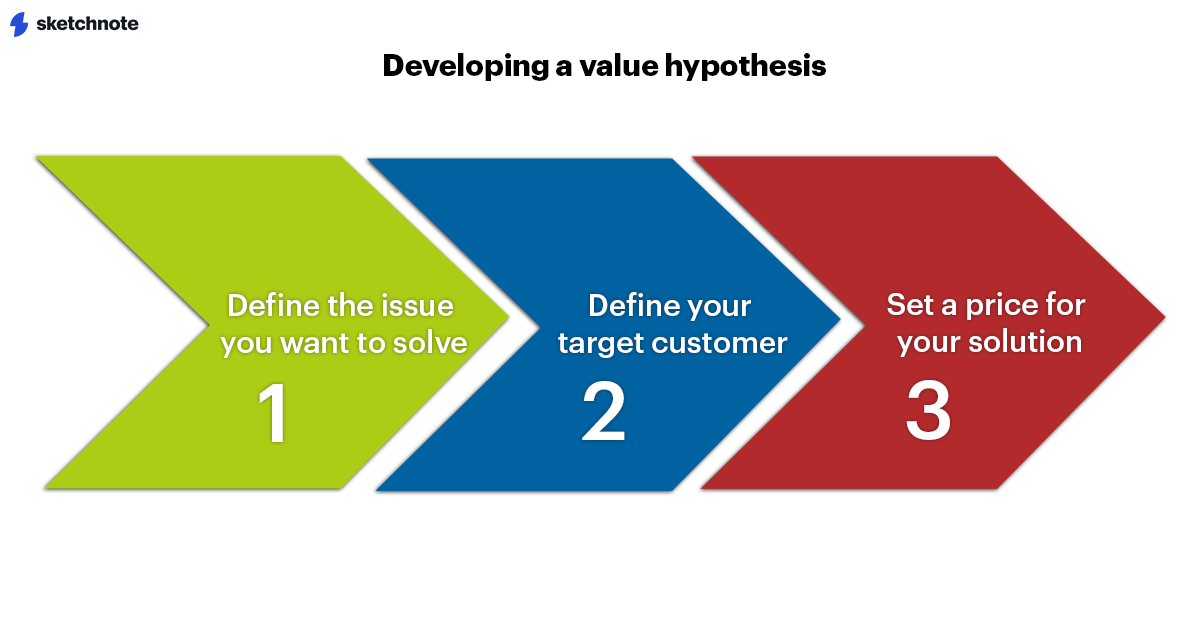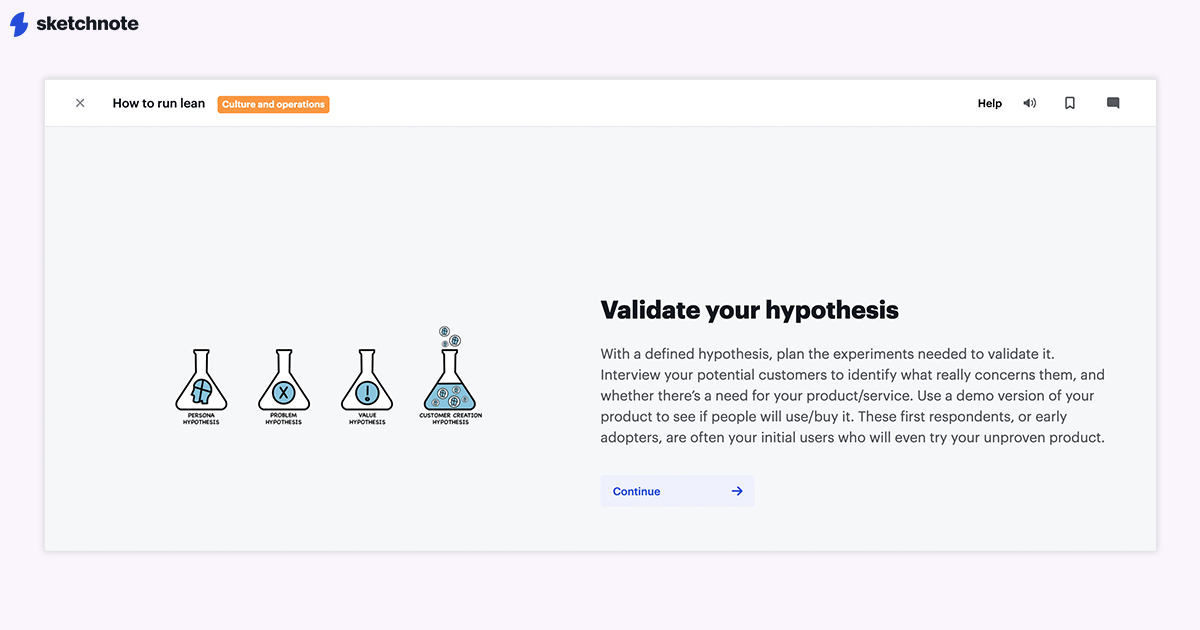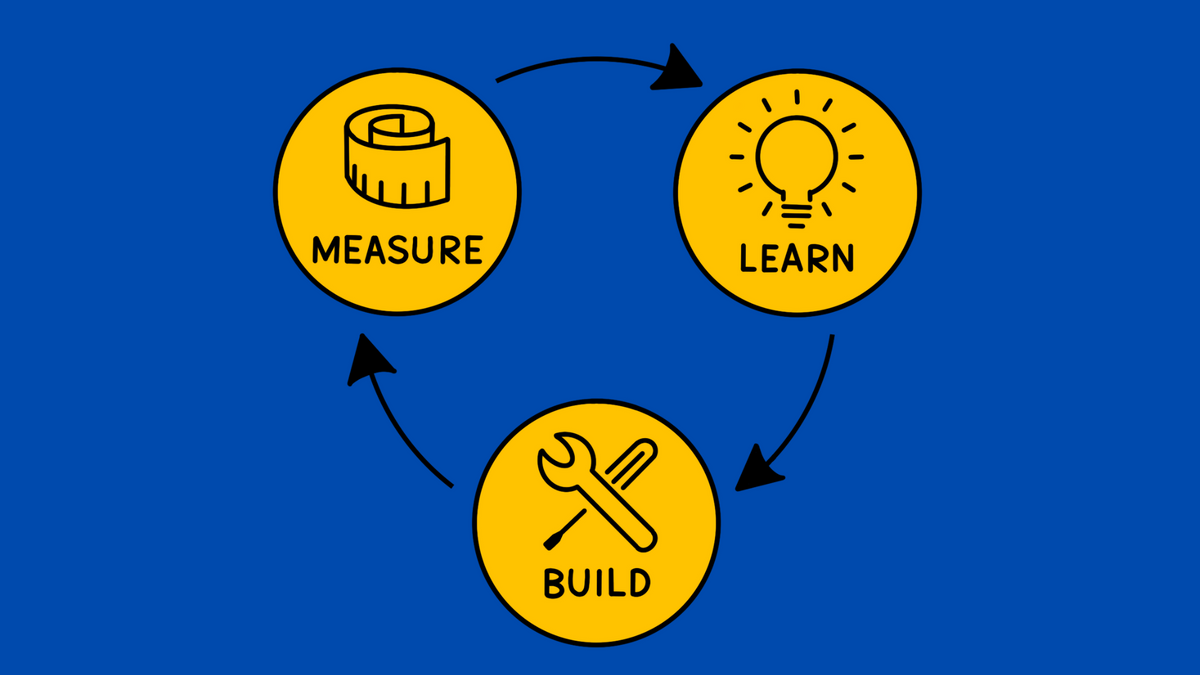You're probably already familiar with the term Lean Startup, even though you aren't entirely sure what it means. Let's go back to the basics!
The book The Lean Startup was written by Eric Ries and published in 2011. It presented a new method to validate business ideas using a hypothesis-driven development approach and became popular over time.
In this book, Reis described his approach to navigating the process of creating a profitable business model and a compelling product, by using a method based on hypothesis testing.
His ideas are as pertinent today as they were back in 2011—if not more so. According to a study, 42% of startups fail because they don’t meet a market need. And this is a problem that can actually be dealt with. In his book, Ries identified two types of hypotheses that entrepreneurs today can use to validate the quality of their startup’s idea before making a significant investment: Growth hypotheses and value hypotheses.
In this article, let's focus on explaining Value Hypothesis, why it's considered relevant to this day, and how you can properly develop one for your business. Let's go!

How do you validate your idea?
When you validate your startup idea, you move one step towards ensuring that the product or service you want to offer is viable and will most likely be successful, before investing lots of money, time, and resources in developing a final product.
In The Lean Startup, Reis presents the idea of validation through repeated hypothesis testing, also known as Validated Learning. Let's talk about it.
The Validated Learning approach is essentially based on the idea of taking an initial assumption about the business you want to create and testing it out. Next, you analyze the effects of your experiment to get quantifiable, evidence-based data, and measure it against potential customers to check if it has all requirements to be successful before investing in it.
Usually, the testing is done by first creating a Minimum Viable Product or an MVP. The MVP is a basic version of the prospected product or service that will be used to gather initial feedback from the customer base, without investing much in it.
This MVP is used to monitor how the idea performs, against the user’s needs and wants. It’s then regularly adapted and refined based on the feedback received in the previous rounds. Once the data is used to modify and “improve” the MVP, you can rerun tests!
This approach can be implemented through two main concepts: The Value Hypothesis and the Growth Hypothesis.
These two ideas allow the entrepreneur to make certain assumptions that will be tested later, using the lessons learned from them to analyze if the business idea that they are planning to start is sustainable and viable in the first place.
What is The Lean Startup's Value Hypothesis?
In Reis' book, Value Hypothesis is explained as a way of testing if the idea you have for your startup—product or service—provides value to your potential customers. And is it enough for them to want to pay you for it?
To get started, the entrepreneur makes an assumption about why their potential client would be interested in what they’re offering. They then use several experiments and interactions with the said customer to test the viability of that idea.
With this, the startup is looking to find a good product-market fit. It is adapting an initial proposal to the actual needs and wants of its customers, as well as the market they are competing in, to make its idea’s value proposition as enticing and competitive as possible.
What should a Value Hypothesis promote?
Let's talk a bit more about how you can work on your own. Your own Value Hypothesis should be focused on adequately representing your idea’s potential viability on the market. At the same time, it should also help you visualize and understand which aspects could be modified or changed in order to demonstrate to your clients how much value you deliver to them.
Keep in mind, this hypothesis is not about if you can or cannot achieve building or developing your idea, but whether or not you can deliver value with it to your customers.
![Sketchnote character Frances Love sitting across a man in a suit, having a conversation. The test on screen reads "I believe [target customer] will pay [cost] to buy/subscribe/use/etc. [our product/service] in order to [solve X problem/ satisfy X need]."](https://blog.sketchnote.co/content/images/2023/02/ill_4red.png)
How to develop a Value Hypothesis
Typically, the starting point of creating a Value Hypothesis is based on the following general structure:
I believe [target customer] will pay [cost] to buy/subscribe/use/etc. [our product/service] in order to [solve X problem/ satisfy X need].
This structure is based on assumptions that will later be tested and consequentially verified or rejected.
In order to properly be able to structure our assumptions and hypothesis, we need to know first how to fill up all the blanks. For this, we first have to study and establish a few things:
Define the issue you want to solve with your idea
It’s crucial to know why you wanted to create your product or service in the first place. Why did you think that having your idea in the market was necessary?
Now, this is a wide and vague concept. To zero in on a proper answer for this point, you can try to answer some questions such as:
- What need does your customer have that your product/service will satisfy? Can you clearly state what the potential value of your offer is?
- What is your potential customer doing right now to meet those needs in the absence of your offering?
- How effective are those actions when satisfying the necessity?
- What is your product or service offering? How does it make it more efficient and valuable to your potential clients?
Define your Target Customer
Once you've established the nature of your creation, you should have a clearer picture of who will be interested in acquiring it.
The people you can identify as most likely to purchase that product/ service are your Target Customers.
Here are some questions that will help you pinpoint and identify a more precise idea of a customer:
- What’s your target client’s age/gender/ethnicity/education level?
- What’s your target client’s occupation and economic status?
- Does your target client gravitate toward certain hobbies or interests?
- What are your target client’s values?
Make sure that—by the end of this analysis—you can properly imagine the person you are selling your idea to. The more precise, the better.
Set a price for the solution you are offering
After you have accurately pointed out who your ideal customer is and why they will want to buy your product, it’s time to take a wild guess. How much will they be willing to pay to obtain what you offer?
Although it is difficult to answer, it’s key to have this assumption to build your hypothesis. Here are some questions to guide you when looking to determine the cost of your offer:
- How much is your competitor charging for their product? How much does the current solution to the customer’s problem cost?
- How many people (target demographic) are expected to be interested in your product?
- How much do you need to charge in order to see profits?
- How much do you think your potential client is willing to pay to receive your product's benefits?
Once you have all of the above information, you can properly fill out the basic structure and create your idea's first Value Hypothesis.
And finally, when you have the Value Hypothesis, you can start experimenting and checking if the assumptions are correct or not, seeing if there’s enough interest for your offer.
During this process, it’s more likely than not that you'll have to run several hypotheses in order to draw valid conclusions. However, keep in mind that hypothesis testing should be done individually, since the results may not be conclusive or clear enough if several experiments are run simultaneously.
Multiple experiments will give you a better picture of the situation and help you make better decisions and achieve more profitable results!
To learn more about developing your Value Hypothesis better, check out Sketchnote's lesson on running a lean startup.

At what stage should one develop a Value Hypothesis?
The best time to work on developing a Value Hypothesis is in the early stage of your startup.
This is because the purpose of the hypothesis testing is to find out if whatever you are offering provides enough value for your potential customers to be willing to pay for it, making it a profitable product or service for your business.
But what happens if you wait until the later stages of your startup development to create experiments to test this viability? In that case, the chances are that you would have already invested a lot of money, effort, and resources that may go to waste.
The tests will still be helpful, but the approach will be generally less profitable. This is because you would have already made a significant investment in it, in all probability.
The sooner you start designing experiments to analyze your potential customer base, the sooner you’ll be able to attain results, measure, and learn from them. You can then go on to achieve what is called validated learning and eventually be able to apply them to your business.
Examples of businesses' Value Hypotheses
Zappos, the online shoe retailer, is one the most outstanding examples of how using a Value Hypothesis can be an excellent option for a starting business.
When its founder, Nick Swinmurn, was at the beginning of the business, he used one thing that helped him avoid making a huge initial investment.
Recounting his growth in a few interviews, Swinmurn says that he would go to his local shoe stores to take pictures. He'd click images of all the different shoe models he could find, and would post them to the Zappos website.
Once the pictures of all models were uploaded, he would monitor which ones captivated his customers' attention. When someone purchased a pair of shoes from his website, he would head to the original store to buy the same one and send it off to his customer.
This way, he cut down on an immense amount of money that would need to be put into stock and storage investment. Despite that, he was able to monitor how his customer base behaved and reacted to his business model.
Another successful example of the usage of this approach is Hubspot.
Before the tool focused on its sales and marketing services, it was initially a blog. Co-founders Brian Halligan and Dharmesh Shah said they, “noticed a shift in the way people shop and buy,” and that’s how they evolved their original idea into the Hubspot that we know today.
By using the feedback they were getting from their readers, Halligan and Shah could optimize the product they wanted to offer into something that people actively wanted and needed.
In conclusion, start working on your business' Value Hypotheses as quickly as possible—the earlier in the stage, the better. Don't be afraid to answer the question about how much you want to charge your customers for your products or services. And finally, run several hypotheses to zero in on and validate the correct one. Good luck!



